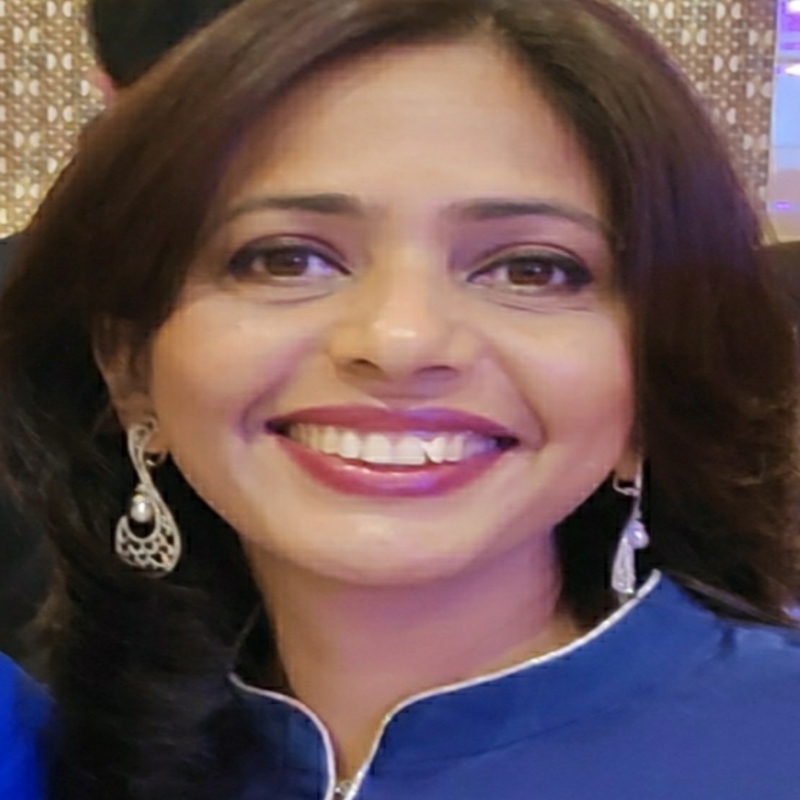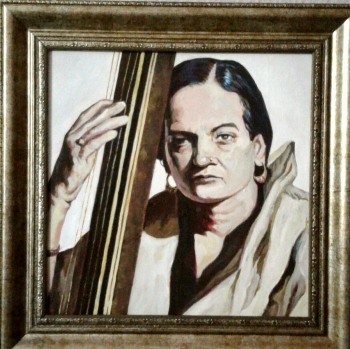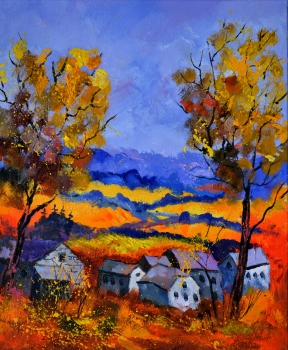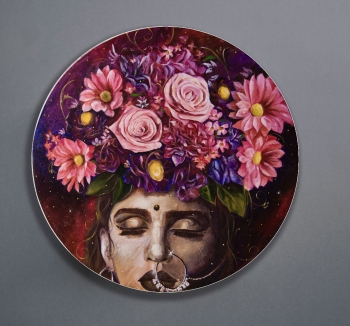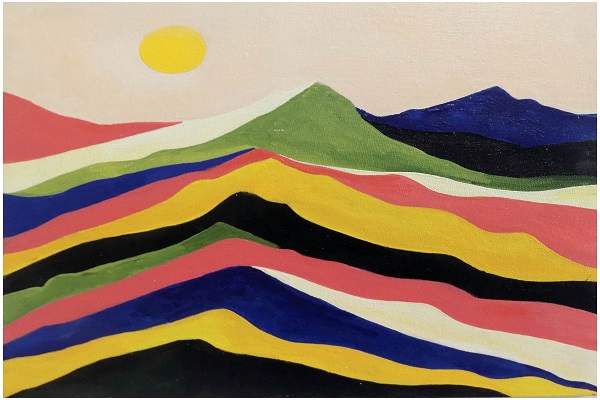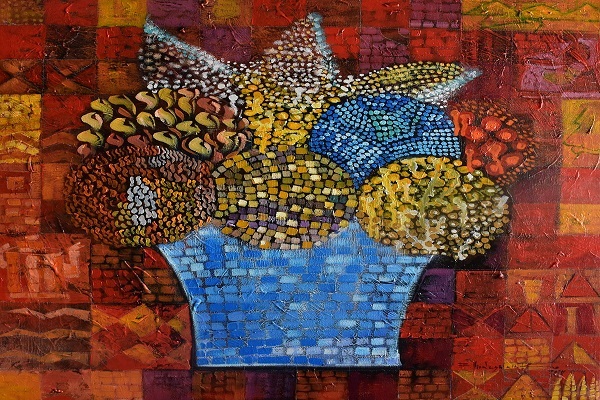
In the vast and diverse landscape of contemporary art, one form stands out as a testament to boundless creativity and innovation — mixed media art.
Unlike traditional art forms confined to a single medium, mixed media art weaves together a symphony of materials and techniques. It creates a visual tapestry that transcends the conventional boundaries of expression. The significance of exploring mixed media in the realm of contemporary art cannot be overstated. It is a journey that goes beyond the mere act of creation. It is an exploration of possibilities, a venture into uncharted territories of expression.
Overview of Various Techniques Used in Mixed Media
In the captivating world of mixed media art, the allure is found in the blend of various techniques, with every brushstroke narrating its own distinctive tale. Join us as we explore the multitude of artistic methods that artists utilize to craft their masterpieces.
1. Collage Creation
One of the fundamental techniques in mixed media art is the art of collage. Artists seamlessly blend different materials, textures, and shapes, crafting a visual symphony that transcends the limitations of a single medium. Magazine cutouts, fabric snippets, and textured papers converge to create a rich, multidimensional surface.
2. Layering Magic
Layering is a technique that adds depth and complexity to mixed media pieces. Artists build up layers of paint, paper, or other materials, allowing each layer to peek through the surface. This method not only creates a tactile experience for the viewer but also adds a sense of history and evolution to the artwork.
3. Texture Play with Impasto
Impasto, a technique involving the thick application of paint, adds a tactile and sculptural quality to mixed media pieces. The raised textures create shadows and highlights, transforming the two-dimensional canvas into a tangible, three-dimensional experience. This technique adds a visceral and dynamic element to the artwork.
4. Image Transfer Alchemy
Artists often use image transfer techniques to incorporate photographs or printed images seamlessly into their compositions. By transferring images onto the canvas, artists can integrate personal or historical elements, adding layers of meaning to their artwork.
5. Stenciling for Precision
Stenciling is a precise technique employed in mixed media to introduce intricate patterns or designs. Artists use stencils to apply paint, ink, or other mediums with precision, allowing for the creation of detailed and visually stunning elements within the composition.
6. Found Object Integration
Mixed media artists often turn to found objects to introduce an element of surprise and unpredictability. Anything from discarded keys to antique buttons can find its way into a composition, creating a narrative that extends beyond the canvas.
7. Digital Integration
In the contemporary landscape, artists seamlessly blend traditional techniques with digital elements. The integration of technology, such as digital printing or projections, adds a modern twist to mixed media art, expanding the possibilities of creative expression.
8. Textual Elements
Adding words or textual elements is a powerful technique in mixed media art. Whether it's handwritten notes, snippets of poetry, or printed text, words introduce a layer of storytelling, encouraging viewers to engage with the artwork on a more intellectual level.
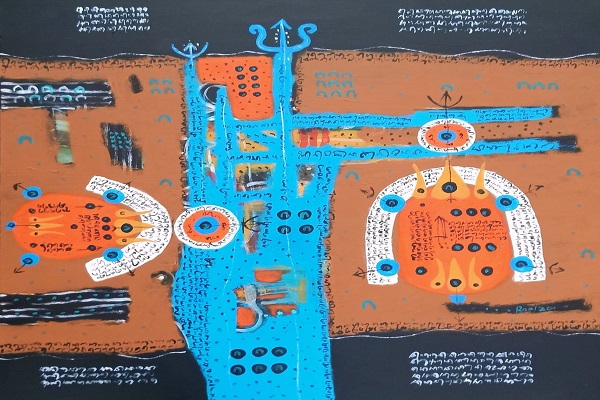
How the Fusion of Techniques Elevates Artistic Expression?
In art, the fusion of techniques stands as a testament to the boundless ingenuity of artists. Beyond the conventional boundaries of brush and canvas, contemporary creators are weaving a rich tapestry of expression through the harmonious combination of various artistic methods.
1. The Palette Unleashed
Traditional techniques often confine artists to a specific set of tools, limiting the scope of their imagination. However, the amalgamation of techniques breaks these chains, offering a vast palette of possibilities. From the interplay of acrylics and collages to the dance of digital elements with oil paints, artists now have an expanded arsenal, allowing them to bring their visions to life in unprecedented ways.
2. Texture and Dimension
One of the key advantages of combining techniques lies in the creation of texture and dimension. Mixed media art allows artists to layer materials, adding depth and tactility to their work. The result is not merely a visual feast but an interactive experience that engages the viewer on a sensory level. Thus inviting them to explore the intricacies of the artwork through touch and sight.
3. Breaking Norms, Building Originality
Artistic expression thrives on breaking norms, and the combination of techniques provides a platform for just that. As artists push boundaries, experimenting with diverse methods, they cultivate a signature style that is uniquely their own. The fusion becomes a visual language, a distinct dialect that communicates the artist's perspective in a world that celebrates the unconventional.
4. Dynamic Storytelling
Every artwork has a story to tell, and the fusion of techniques amplifies this narrative. The layering of materials and methods adds complexity to the storytelling, allowing artists to convey multiple emotions and messages within a single piece. It transforms art into a dynamic conversation, a dialogue between the creator and the audience, inviting interpretation and sparking conversations.
5. Bridging Past and Present
The combination of techniques acts as a bridge between artistic traditions and contemporary visions. It's a dialogue between the past and the present, where traditional methods find new life in the context of modern expression. This fusion not only honors artistic heritage but also propels it forward, ensuring a seamless continuum of creativity through the ages.
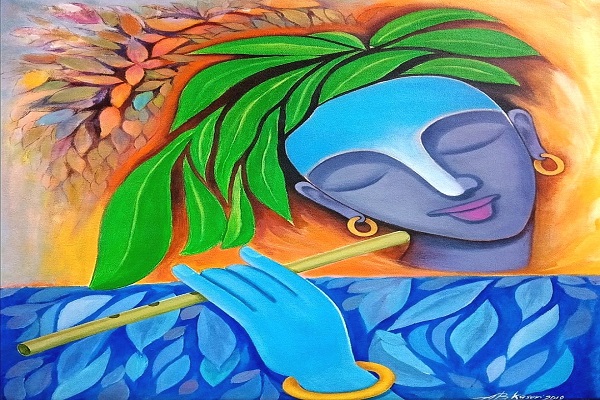
Exploring Unconventional Materials in Modern Paintings
In modern art, a silent revolution is underway – a departure from traditional canvases and pigments and an embrace of the avant-garde. Today, let's embark on a journey deep into the heart of artistic innovation as we unravel the fascinating exploration of unconventional materials in the creation of modern paintings.
From the studios of daring artists to gallery walls, the shift towards the unconventional marks a paradigm shift in the very essence of what we perceive as art.
1. Beyond Canvas and Pigment
Modern painters are pushing the boundaries by reaching beyond the familiar realms of canvas and oil. Materials once relegated to the periphery of artistic expression, such as reclaimed wood, metals, and even discarded objects, are finding a new home on the artist's palette.
2. A Symphony of Unlikely Allies
The artistry lies not only in the vision but in the choice of materials. Broken glass, textile scraps, or industrial metals – each element brings its own narrative to the masterpiece in the making. It's a symphony of unlikely allies, where the textures of unconventional materials dance in harmony, creating visual poetry that challenges traditional norms.
3. Sustainability in Art
As the world grapples with environmental concerns, artists are championing sustainability by repurposing materials that would otherwise end up discarded. The eco-conscious movement within modern art sees creators breathing new life into forgotten items, turning them into thought-provoking statements on both artistic and environmental fronts.
4. Provocation and Symbolism
Unconventional materials are not merely a deviation from the norm; they are deliberate choices laden with symbolism and the power to provoke thought. Artists utilize barbed wire, rusted metal, or weathered wood. Each material carries its own history, infusing the artwork with layers of meaning that transcend the visual.
5. Tactile and Sensory Experiences
In the exploration of unconventional materials, artists invite viewers not only to see but to touch and feel. The tactile nature of these materials adds an extra dimension to the viewing experience, engaging the senses in a way that conventional paintings seldom achieve.
Read More: Nature-Inspired Mixed Media Art
Wrapping Up
The amalgamation of techniques and materials within mixed media art is not just an artistic endeavor. It's a crucial evolution in the landscape of contemporary art. It provides artists with an expanded palette, allowing them to break free from the shackles of convention and embrace a dynamic form of storytelling. The importance lies in the ability of mixed media to bridge the past and present, honoring tradition while propelling artistic expression into uncharted territories.
Visit Indian Art Ideas's website today and explore the myriad hues, textures, and stories woven into each painting. Transform your surroundings into a gallery of inspiration. For more info, contact us at: https://indianartideas.in/contact-us
FAQs:
When did mixed media art begin?
Mixed media art began to gain prominence in the early 20th century, with pioneers like Pablo Picasso and Georges Braque experimenting with combining various materials. The movement evolved as artists sought innovative ways to break traditional artistic boundaries, marking a significant shift in the art world during the Cubist era.
Which technique is frequently employed in mixed media artwork?
The most common technique in mixed media art is collage creation. It is where artists seamlessly blend various materials, textures, and shapes on a single canvas. This approach facilitates the creation of a composition that is visually rich and multidimensional, liberating artists from the limitations of a singular medium. Collage's adaptability makes it a favored option, empowering artists to articulate their creativity using a diverse array of elements.
How do you make mixed media paintings?
Creating a mixed-media art involves layering various materials like paper, fabric, and found objects onto a canvas. Artists often employ techniques such as collage, impasto, and image transfer, allowing for a dynamic fusion of textures and colors. The process encourages experimentation, enabling the artist to convey a rich narrative through a blend of traditional and unconventional elements.











